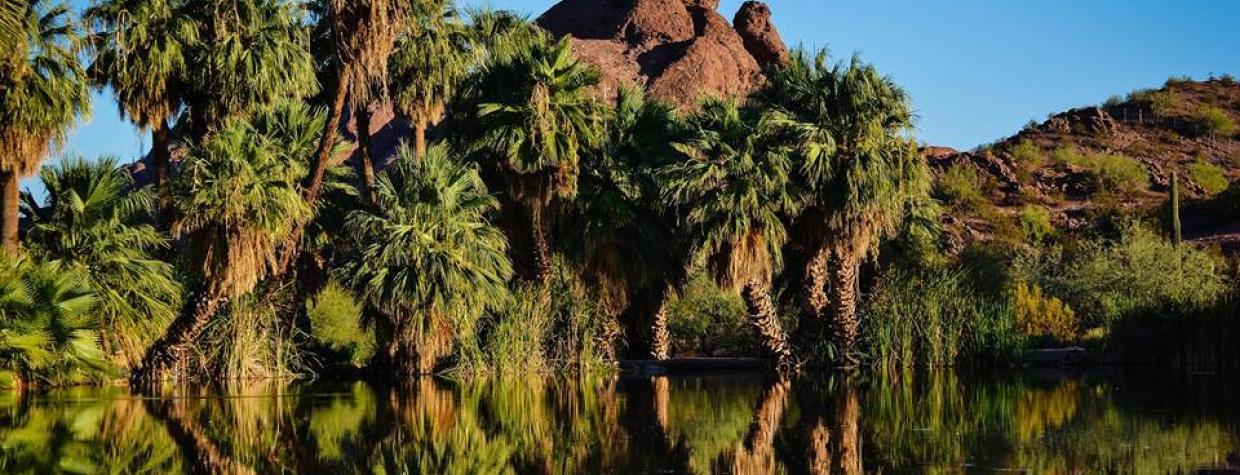America's national monuments are in the news quite a bit lately. Arizona, for its part, is home to numerous national monuments, along with national parks, historic sites, memorials and recreation areas. But in the 1910s and '20s, there was one more — right in the middle of the Phoenix area.
In 1914, President Woodrow Wilson, under the Antiquities Act of 1906, designated Papago Saguaro National Monument, a 1,200-acre site in Phoenix known for its red sandstone buttes and Sonoran Desert vegetation. In his decree, Wilson cited the monument's "splendid examples of the giant [saguaro] and many other species of cacti and the yucca palm, with many additional forms characteristic of desert flora, [that] grow to great size and perfection and are of great scientific interest." He also noted the archaeological value of the area's pictographs, drawn by early Native Americans.
According to the National Park Service, the monument became a popular tourist destination and camping spot, but there was little funding for preservation or management. Graffiti and advertisements were painted on the iconic red rocks, and many of the monument's saguaros were stolen for landscaping or sale.
That deterioration, plus a push to install a canal and power lines in the area, spurred calls to revoke Papago Saguaro's monument status — something that could only be done via an act of Congress. On April 7, 1930, Congress did just that, making Papago Saguaro the first national monument in the U.S. to be "abolished." (Since then, 10 others, all in other states, have seen the same fate, for a variety of reasons.)
The congressional act transferred ownership of the land to the state of Arizona, which gave part of it to the city of Tempe to use as a National Guard rifle range. The city of Phoenix then purchased it in 1959, and it became Papago Park, which today features hiking trails, the Phoenix Zoo, the Desert Botanical Garden, the Hall of Flame Museum and Papago Golf Course, along with the tomb of the state's first governor, George W.P. Hunt.

